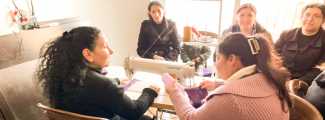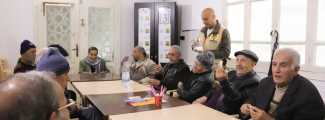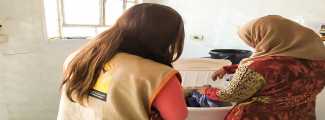VT: Upholstery training course—Nabd Community Center, Salkhad, Sweida
In view of the increasing need for qualified workers in upholstery, and in light of the market needs assessment, the team of the Syrian Society for Social Development (SSSD), in cooperation with the UNHCR, implemented a training course in this time-honored craft.
The training targeted predominantly female heads of households of various age groups, from both IDP and local communities. The programme included a set of theoretical axes and practical applications on the methods of designing and wadding cushions, pillows, mattresses, corners and other skills that pertain to the craft.
After the course ended, one of the trainees gratefully said: “I felt I’m able now to support my family and children, meet my home’s needs, open an upholstery shop and enter the job market.”



